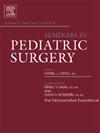Non-congenital biliary disease in infants
IF 1.4
3区 医学
Q3 PEDIATRICS
引用次数: 0
Abstract
Non-congenital biliary diseases in infants, such as inspissated bile syndrome, hemolysis-related cholelithiasis, and recurrent pyogenic cholangitis, can lead to significant morbidity due to biliary obstruction and hepatic dysfunction. Diagnosis typically involves clinical evaluation, liver function testing, and imaging, with ultrasound as the first-line modality. Management depends on the underlying etiology and severity, with many cases resolving through supportive care, removal of offending agents, and bile acid therapy. Surgical intervention is indicated for persistent or complicated cases. While endoscopic retrograde cholangiopancreatography (ERCP) is often limited in neonates due to technical constraints, laparoscopic common bile duct exploration (LCBDE) has emerged as a viable alternative, offering ductal clearance through transcystic or direct approaches. Techniques such as power flushing, balloon sphincteroplasty, and stone retrieval devices have shown success in pediatric populations. Long-term follow-up is essential to monitor for recurrence, particularly in patients with ongoing hemolytic disorders. Continued research and innovation are needed to optimize diagnostic and therapeutic strategies for these complex conditions in infants.
婴儿非先天性胆道疾病
婴儿的非先天性胆道疾病,如胆汁浓缩综合征、溶血相关性胆石症和复发性化脓性胆管炎,可因胆道梗阻和肝功能障碍而导致显著的发病率。诊断通常包括临床评估、肝功能检查和影像学检查,超声是一线方法。治疗取决于潜在的病因和严重程度,许多病例通过支持性护理、去除致病药物和胆汁酸治疗来解决。对于持续或复杂的病例,需要手术干预。由于技术限制,内镜逆行胆管造影(ERCP)在新生儿中常常受到限制,腹腔镜胆总管探查(LCBDE)已经成为一种可行的替代方法,通过经囊或直接入路提供胆管清除。诸如动力冲洗、球囊括约肌成形术和取石装置等技术在儿科人群中取得了成功。长期随访对于监测复发是必要的,特别是对持续的溶血性疾病患者。需要持续的研究和创新来优化婴儿这些复杂疾病的诊断和治疗策略。
本文章由计算机程序翻译,如有差异,请以英文原文为准。
求助全文
约1分钟内获得全文
求助全文
来源期刊

Seminars in Pediatric Surgery
PEDIATRICS-SURGERY
CiteScore
2.80
自引率
5.90%
发文量
57
审稿时长
>12 weeks
期刊介绍:
Seminars in Pediatric Surgery provides current state-of-the-art reviews of subjects of interest to those charged with the surgical care of young patients. Each bimontly issue addresses a single topic with articles written by the experts in the field. Guest editors, all noted authorities, prepare each issue.
 求助内容:
求助内容: 应助结果提醒方式:
应助结果提醒方式:


